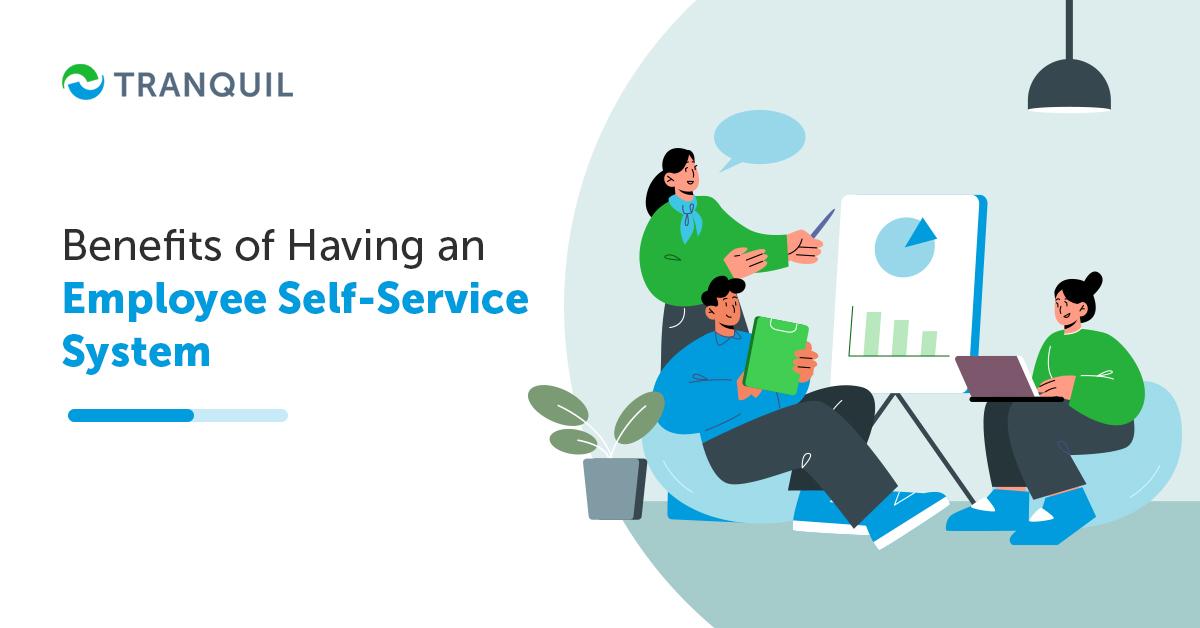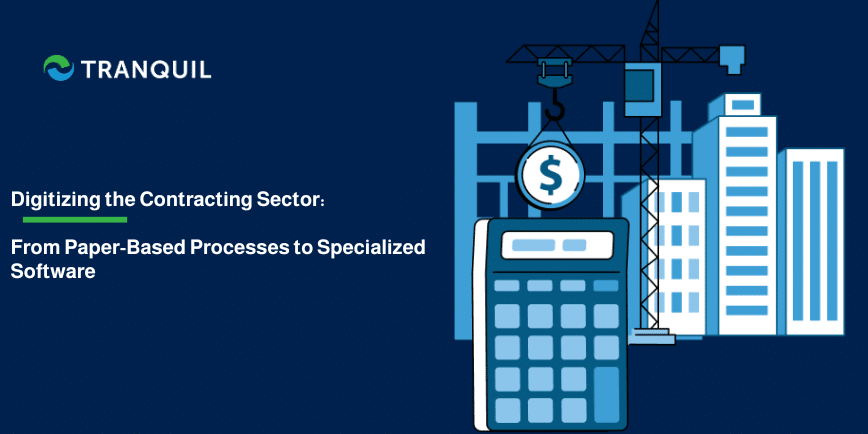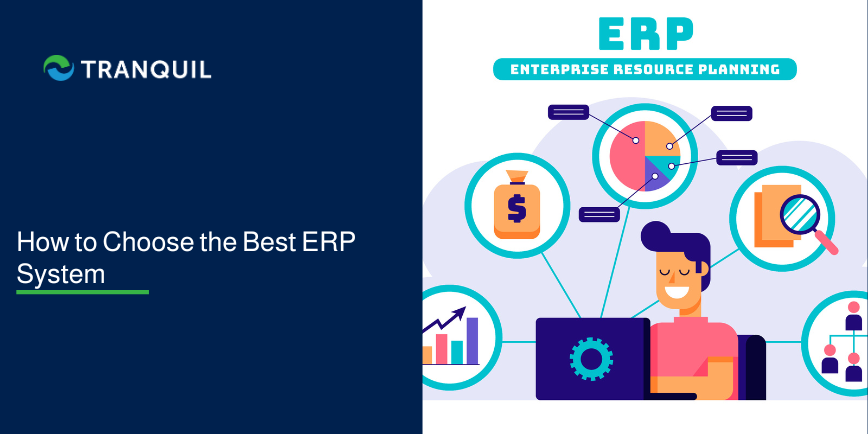
Benefits of Having an Employee Self-Service System
Most companies today use an ERP system like Tranquil to streamline and automate their business processes and be more efficient and agile.
One of the important modules in an ERP is HR .
It helps HR personnel to focus on more critical tasks and leave the mundane tasks to the software.
Additionally, they also have an employee self service module for the use of employees; this is sometimes incorporated a part of ERP or HCM systems or as a standalone solution.
What is an ESS System?
ESS allows employees to handle many of their administrative needs by themselves through a specific web or internet portal.
Employees can easy to update all their personal information, access hr-related information concerned to them, download payslip, enroll for benefits, apply for expense compensation, etc.
Several portals have now become advanced and managing insurance plans and other employee benefits can also be handled by employees.
Previously, these tasks were performed manually by the HR department, and on paper.
ESS portals save time, effort, and money, leaving little scope for error.
Decreased expenses in administration allow employers to offer better benefits to employees.
ALSO READ: Must Have HRMS Modules and Features
Why Employee Self-Service?

The employee market is becoming increasingly competitive, and it is essential for companies to create a positive and vibrant work atmosphere.
One way of doing this is to give employees direct control over important information that pertains to them.
Today these solutions are optimized for mobile and networking platforms, and are an important part of employee retention and engagement plans; other programs and activities are recognition, continued learning through e-learning systems, social activities across the organization, health checkups, wellness programs, and so on.
How to Create Self-service Experiences for Customers and Employees?
Content and delivery are the main elements in any system that allows for self-service – software and knowledge.
Software is used to deliver the knowledge (which you load into the system) to employees).
A self-service experience is called a portal, as it literally is a gateway to a particular topic or information set.
That brings us to the next question as to how they actually work.
ALSO READ: Benefits of ERP in Accounting and Financial Management
How Do Employee Self-Service Portals Work?
An ESS system provides the full range of features by combining searchable databases and interactive web apps.
Automated systems are often combined with ticket-based help desks or live chat in the interactive sections of ESS portals.
The knowledge bases include discussions or Q&A sessions where employees answer questions posed by other employees regarding IT and HR.
While each company may have different requirements for an employee self-service system, there are quite a few common features, making it easy for companies to purchase third-party software rather than getting unique solutions made.
Features of HR Self-Service Software

Most ESS solutions will have these features:
- Payroll functions – changing tax deduction and withholding amounts, accessing pay slips online, logging hours worked, scheduling days off, etc. by employees themselves
- Benefit programs – browsing through different plans offered by the employer and choosing what the employee likes, managing enrollment into the programs, and updating details like major life events
- Allowing employees to alter plans for retirement investment, like withdrawing money, setting up loans, modifying contributions by employees, and so on
- Managing expenses
- Managing business travel and filling for reimbursement
ALSO READ: Guide on How Do ERP Systems Work
Additionally, an ESS portal may also have these features:
- Employee recruitment – employees can search for available positions, apply for jobs, and check the status of applications; they can also get alerts when similar jobs are posted in the future
- Onboarding employees through virtual orientation, where they get important information necessary to be able to perform their jobs well. It enables companies to track new recruits and make them feel welcome and connect with them virtually regardless of their location.
- Providing training for continued education and upskilling of employees through e-learning and computer-based testing. Their progress in the course and performance in tests can be easily tracked.
- Employees can also complete self-evaluation exercises, update their training and development activities, set goals, etc. They can also examine, reply to and sign their yearly performance evaluation reports.
- Some companies are encouraging employees to adopt healthier lifestyles by including wellness surveys in ESS platforms.
Benefits of ESS
Not only do ESS solutions grant employees greater economy to manage their leaves, payroll, and benefits configurations, they help HR personnel to save time from routine tasks and focus on more important work.
ESS helps employees feel valued, more connected by their companies, increase their productivity, and be relatively happy by creating a more collaborative and inclusive work culture.
1. Managing Shifts in Employee Expectations with Self Service
Every employee wants to be heard today – which while easy in smaller firms, may be near impossible in large companies.
Thanks to ESS systems, however, it is now possible for departmental and/or regional managers to hear every employee, thereby making it easy for them to fulfil employee expectations and resolve their grievances.
2. Anywhere, Anytime Accessibility

Most self-service portals are cloud-driven, enabling employees to access the portal from wherever they are, on any device, and whenever they need to.
There is no longer any need to be at the office computer to log in to the portal.
They can also post queries or update information at whatever time is convenient for them as well.
ALSO READ: ERP vs CRM
3. More Streamlined Systems
In earlier times, every bit of information relating to human resources was manually entered in a system by a specially trained employee; payroll information was handled by either a different department (say accounts) or outsourced to a third party.
Other revenue information was again the responsibility of a different department.
With self-service systems, however, all of these activities are integrated and streamlined, enabling easy access to all the stakeholders.
4. Fewer Errors
While the ESS portal enables quicker and more efficient entry and transfer of data, it also helps minimize and even eliminate errors.
One of the main drawbacks of manual data entry is the presence of human errors.
Thanks to self-service systems and almost 0 errors, HR managers can easily pick out errors in recent additions of applicant or employee information.
5. Improving HR Function
By implementing an ESS system, HR departments can significantly improve their functionality.
They need not focus on mundane, repetitive, and time-consuming activities, and can instead concentrate fully on issues where the human touch is important.
Data entry and providing responses to simple employee inquiries is no longer an activity that necessitates time and efforts from HR managers or other staff.
ALSO READ: How to Choose an ERP Software to Enhance your Purchase Management?
6. Decreased HR Workload
The biggest advantage of the self-service portals for employees is that it helps to reduce the workload of HR employees – who have mountains of work to do every day.
Any activity that can be performed by employees themselves is a great help to the HR department.
With employees updating their personal information, going over their schedules, checking payroll and printing pay slips, logging their work times, choosing benefit programs, adjusting timesheets, and so on, it takes a load off the minds of HR personnel.
Without a self-service portal, all of these tasks would have to be completed by the HR department – and they can be pretty time consuming.
This is more so the case in larger companies with a lot of employees.
Now HR managers can focus on more value-adding tasks with the time freed up from such mundane tasks.
7. More Empowered Employees

Thanks to self-service portals, employees are more empowered now than ever before.
They can access and edit their personal information, and they can do this from any computer or mobile device with an internet connection.
They can access make changes in:
- Paid leave requests
- Personal and contact information
- Vacation days
- Information on pay rate
- HR inquiries, reports, and other information
- Performance evaluations
- Benefits programs like insurance, medical, and so on
With direct access to their information, employees have more control, and it gives them greater satisfaction.
They also stay more engaged with their employers.
They get information regarding training opportunities to enhance their knowledge and skills and have better career growth.
Employees who engage more are more likely to be loyal to the organization and have enhanced productivity as well.
Employees who are serious about their careers are likely to look for opportunities to upskill and improve themselves, to advance their careers.
Such employees contribute more to the company and also help to reduce employee attrition and turnover.
ALSO READ: Understanding Different ERP Systems
8. Easier Self Service Compliance and Auditing
Thanks to the easy data entry and more efficient HR functions, auditing has become much simpler.
It has resulted in improved integrity of data, as well as ensuring better compliance with existing regulations as well as company policies.
Here are a few other benefits in short:
- It simplifies communication between organizations and employees with regard to employee communication materials like carrier directories, summary plan descriptions, new recruit forms, handbooks, and benefit books, for example.
- Improved relationships with insurance brokers and carriers with information sharing, leading to more diverse and enhanced health plan options for the organization and employees.
- Reinforces corporate culture
- Accurate tracking of hours logged by employees
Optimize Your Employee Self-Service Portal

For your ESS to be successful, it is essential that you have a knowledge base that contains important information for employees.
Only if it has the information your employees require, can it be useful. How will you know what to include and what is relevant?
Look at the most searched information by your employees, and create related content, keeping those topics in mind.
Google will help you identify other topics employees are looking up.
Also, remember that this database will have to keep evolving – just like your business.
You will need to keep updating it so that your ESS is used to its full potential, and you also help your employees be well informed, and thrive in their careers.
Review your content regularly to ensure that it is up-to-date and relevant. Consider letting employees rate the content so you know what to improve.
ALSO READ: Factors for a Successful ERP Implementation
Challenges of Employee Self-Service
While it offers numerous benefits, there are some challenges associated with the ESS as well.
It is technologically complicated to integrated multiple self-service channels like retirement accounts, wellness programs, portals, intranet, and so on, as login procedures and data formats are likely to be vastly different.
It can take a long time to educate employees about the capabilities and features of the system and to motivate them to start using the portal.
Upgrading to new systems from legacy self-service systems can pose several problems – mainly regarding which vendor to choose.
Companies have to think whether to purchase different systems from different vendors to server the multiple purposes, and then whether they may be compatible, or whether to have a specialized module in an ERP.
At Tranquil, we can provide an ESS solution that is a perfect fit for your specific business needs. Schedule a demo with us at your convenience, and we will show you how it works. We will be happy to answer any queries that you may have for us.



